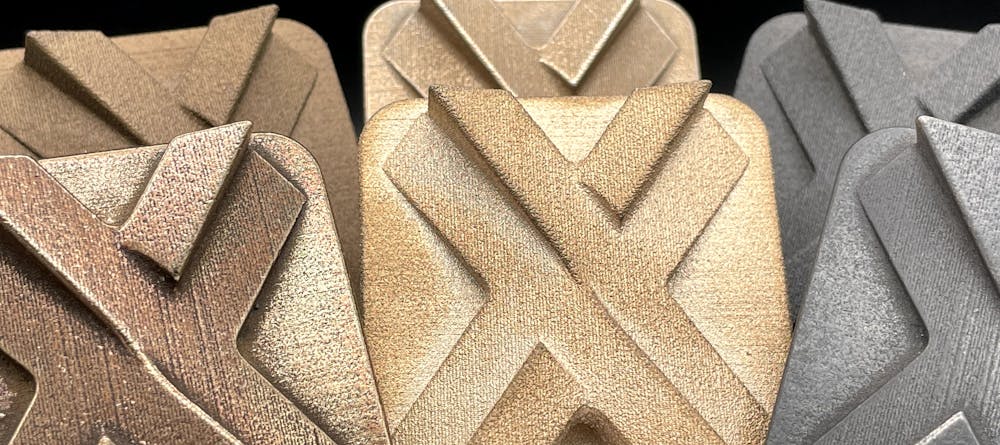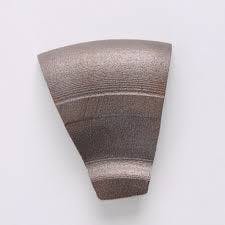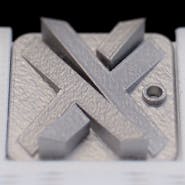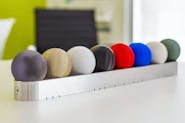X1 Metal 316i Binder Jet 3D Printing Service
Get instant online quotes on parts in over 70 metal and plastic materials. Free shipping on all US orders. ISO 9001:2015, ISO 13485, IATF 16949:2016, and AS9100D certified.

Applications for X1 316i Metal 3D Printing
This material system from ExOne has low magnetic properties which makes it particularly useful for applications in the food and medical industries. The copper alloy acts as a natural antibacterial agent making it easy to decontaminate printed parts. Since the matrix material is easy to polish, additional applications exist in bath and kitchen hardware prototypes and low volume production.
X1 316i Stainless Steel infiltrated with bronze is a matrix material composed of 60% stainless steel and 40% bronze infiltrant. The lower yield strength of the material enables it to be easily machined and polished. This material also exhibits enhanced corrosion resistance properties.
Typical X1 316i Material Properties
| Material Properties | Test Method | Values |
|---|---|---|
Material Properties Tensile Strength - Ultimate Strength | Test Method ASTM E8 | Values 84 ksi (580 MPa) |
Material Properties Yield Strength (0.2% offset) | Test Method ASTM E8 | Values 41 ksi (283 MPa) |
Material Properties Elastic Modulus (ASTM E8) | Test Method ASTM E8 | Values 19.5 Mpsi (135 GPa) |
Material Properties Elongation | Test Method ASTM E8 | Values 14.5% |
Material Properties Hardness | Test Method ASTM E18 | Values 60 HRb |
Material Properties Fractional Density | Test Method MPIF 42 | Values 95%+ approximate |
Material Properties Density | Test Method MPIF 42 | Values 0.284 lbs/in^3 (7.86 g/cm^3) |
Material Properties Machinability | Test Method
| Values Conventionally machinable |
Material Properties Weldability | Test Method
| Values Use silicone bronze rod & TIG weld |
Material Properties Thermal Conductivity (Room Temp.) | Test Method
| Values 11 BTU/hr ft °F (19 W/m °K) |
Material Properties Specific Heat | Test Method ASTM E1269-11 | Values 0.131 BTU/lb °F (548 J/kg °K) |
Material Properties Thermal Expansion Coefficient | Test Method ASTM E831-14 | Values 10.37 x 10-6/ °F (18.6 x 10-6/ °K) |
Source: ExOne
Surface Finish
- After sintering: ≈ 600 μin Ra (15 μm Ra )
- Bead blasting: ≈ 300 μin Ra (7.5 μm Ra )
- Barrel finishing: ≈ 50 μin Ra (1.25 μm Ra )
Post Processing
After printing is complete, the parts are cured in an oven, which enables the parts to be handled. After curing, the parts are sintered and infiltrated with bronze above 1100°C. Cool down can be varied to control the machinability and hardness of the material.
- Zirblast (Standard)
- Tumble Polished
- Medieval Pewter
- Damascus Steel
- Antique Bronze
- Wheat Penny

See All Our 3D Printed Materials


